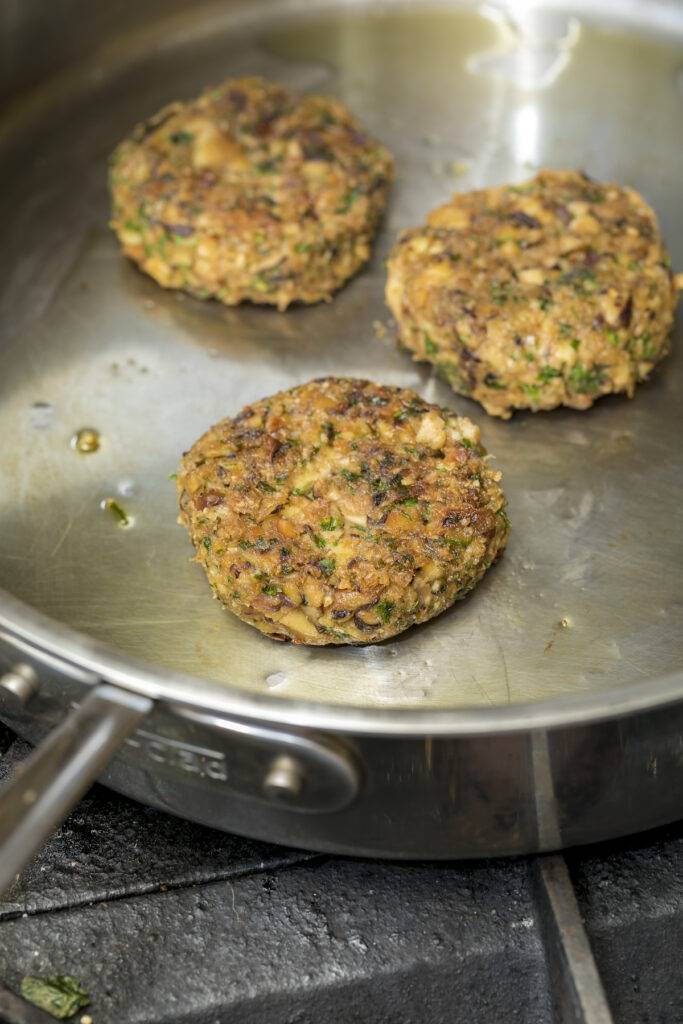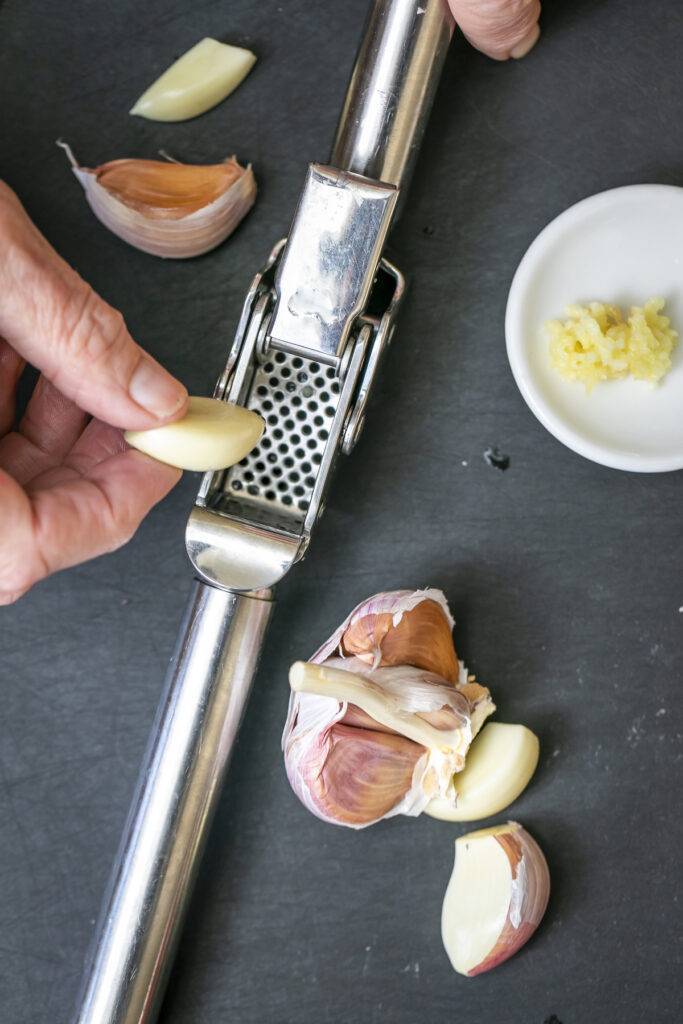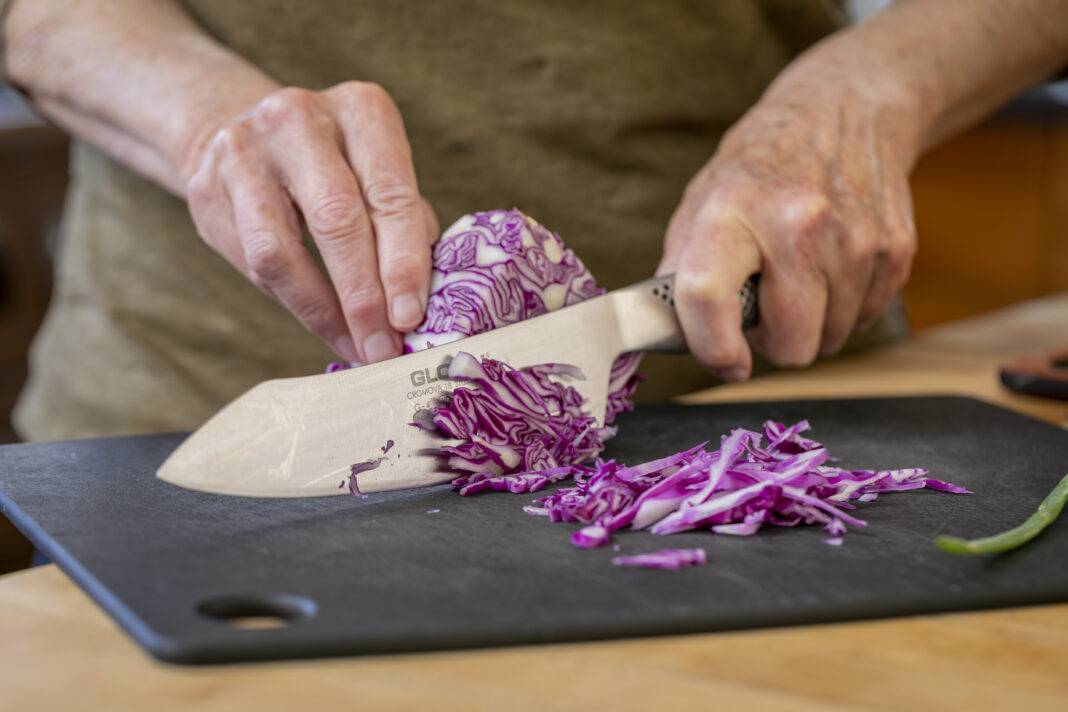Create a kitchen free of clutter — with just the right tools to make great meals.
For most, the kitchen is truly the heart of the house. It is used every day, more often than not many times a day. Sometimes all day. Cooking. Eating. Homework. Ours has also been used for bike repairs, housing baby chicks, plant repotting, a stage for some really uncomfortable political arguments with friends, and science projects. Most of our approaches to kitchens are as messy, unique, and complicated as the lives of the people who live in them.
Kitchens should be personal for this reason. But unfortunately for most of us, our essential cooking style is concealed and obstructed by crowded drawers and countertops lined with unnecessary stuff. It’s a fact: we Americans tend to overbuy and overstock our kitchens. But I have observed that the less pots and knives and tools I use, the better my food gets. And I have noticed the best food I’ve eaten has also come from the simplest, most streamlined kitchens.
Cathy Walthers, who spends six to seven hours in a kitchen most days says, “Having the right tools in the kitchen is the same as having the right tools when you are doing carpentry.”
I had my ideas about what kind of kitchen tools are essential, but I wanted to talk to four chefs to hear about theirs so that I could find some consensus about the best and most sustainable choices for outfitting a kitchen. Gavin Smith, Cathy Walthers, Tina Miller, and Gail Arnold are some of the Island’s most experienced and amazing private chefs around. These four cooks have used every kitchen tool imaginable and have refined systems that work well for them and the excellent food they prepare.
The first rule that all four agree upon is the fundamental rule of all our Room For Change pieces: Less is more. In other words, you do not need to buy the $2,299.95 All Clad D-5 Stainless-Steel 24-piece cookware set. According to all four chefs, no-one does. Nor do you need to buy the $1,282 Shun Classic 9-Piece Knife Block Set. Cathy Walthers uses one chef’s knife. Tina Miller uses an 8” Shun chef’s knife, a 6” Shun chef’s knife, a paring knife, a serrated paring knife, and a bread knife. Gavin Smith uses handmade carbon knives, including a chef’s knife, a paring knife, an oyster knife, and fine knives for boning fish. Besides a bread knife, Gail Arnold uses four knives, including a 8” chef’s knife, 6” chef’s knife, a special Japanese 4” chef’s knife, and a paring knife. “I love my 4” knife. I use it for everything, she says. “I can filet fish with it and use it for fine vegetable work.”
The second rule that pairs well with the first is: Buy only what you will use.

Gavin Smith has a seriously tiny home kitchen and has compiled an amazing traveling kitchen for work. “As a private chef, I essentially bring everything with me — from food to pots and pans. And I have found that I can execute a very sophisticated meal with minimal tools.” His kit includes a knife roll, a Kuhn Rikon vegetable peeler, microplane for zesting, fish spatula, a Rig-Tig thermometer, colorful metal spoons for tasting (colorful so they don’t get confused with his client’s spoons), Band-Aids, an offset spatula, a few sheet pans, unbleached parchment paper, stainless-steel mixing bowls, a really heavy de Buyer carbon steel pan, a Lodge enamel cast-iron dutch oven or skillet (he loves the evaporation on these more than Le Creuset and Staub), a digital scale, a Vitamix immersion blender (he keeps a Vitamix 5200 at home), silicone pads, scissors, a mandolin (only sometimes), Tovolo rubber spatulas, something to hold food waste for compost, stainless-steel strainers, a wine opener, dish towels, and stainless-steel tongs. At home, he also has a juicer, stand mixer, and two grills: a Green Egg and a gas grill. Because his home kitchen is so tiny, he has really learned the art of using less to make anything.
Cathy Walthers, Tina Miller, and Gail Arnold agree with Gavin Smith. And they too have their own lists for what is essential. Cathy, who spends six to seven hours in a kitchen most days says, “Having the right tools in the kitchen is the same as having the right tools when you are doing carpentry. I don’t buy gadgets for things I can do myself. Nor do I buy small appliances unless I am going to use them at least once or twice a week. I bought an ice cream maker and used it once.” How many of us can say that about an ice cream maker? I sure can. “But things like a Soda Stream are fantastic because they make something and produce less waste.” Cathy also researches her tools because good products last. She has had a Kuhn Rikon garlic press for 20 years. “I look for things that make my job easier.” She too uses heavy sheet pans and metal mixing bowls because they are effective and easy to wash. And loves her salad spinner. “I like the ones with the pull cords because they get more water out.” As someone who regularly teaches knife skills, she says, “I tell everyone to buy their knives in person. Not on the internet. You need to hold it in your hand. See how it feels. It is the first part of defining your food.”
What appliances should populate our counters? Tina Miller chuckles, “It’s unbelievable how crowded some counters are. Most appliances just sit there and collect dust. And so many kitchens are filled with junk — dozens of plastic cooking tools, crappy aluminum pans.”
[These chefs] do so much research and really think about their tools, about appliances that will be efficient and effective, [and don’t] always buy new, instead heading to yard sales, Chicken Alley, and the Dumptique for kitchen supplies.
She loves her new Breville toaster oven, which she uses instead of her oven to roast chicken. “It is so efficient. It takes five minutes to preheat and uses so much less energy than an entire oven.” Her other favorite appliances are an electric teapot and a Cuisinart that her son uses to make his “fake parmesan.” In her drawers and cupboards are stainless-steel tongs, wooden spoons, a slotted spatula, a colander, stainless strainers, French torchon kitchen towels, two All Clad sauce pots, a pasta pot, a Le Creuset dutch oven, and a BK black steel carbon skillet that her cousin Erika Miller gave her. “The carbon steel pan is a game changer.” Tina says. And, most chefs do agree these days that carbon is the best for super hot, even heat. She confesses that her “only bad habit is paper towels. I use too many.”
Gail laughs and agrees with Tina that she too uses too many paper towels. “It’s such a bad habit.” She asks more about my conversions with the other chefs and the key tools that Gavin, Cathy, and Tina must have. She agrees and uses many of their same choices – from the Vitamix to a scale to wooden spoons and tongs to sheet pans. “I love the Dutch ovens. They are so versatile and they can move from the stove to the oven to the table.” She loves that efficiency and the efficiency of her kitchen, “Everything I use is within an arm’s reach and I never have to search for anything. I’m not sure Livingston [her husband] would say the same.” She laughs. Gail generally uses one big heavy pan, her Dutch oven, a soup pot, and a few sauce pans. “People have given me a few copper pots, which are great for braising. And I have Trudy’s [Taylor] big chowder pot that I use when I’m making a brisket or chowder for 24 people. ”

The last rule for building a sustainable kitchen is: Buy better. I love that Gavin and Cathy do so much research and really think about their tools. I love that Tina thinks about appliances that will be efficient and effective. And Gail doesn’t always buy new, instead heading to yard sales, Chicken Alley, and the Dumptique for kitchen supplies. Thanks to this, she says, “I have a huge collection of Pyrex, which is great for food that needs to be dropped off or stored.”
After talking to everyone, I reflect on the evolution of my own kitchen. I, like Gail, thrive on the efficiency of the space, which has become even more honed since what I’ll call Covid cooking, which often means cooking three meals a day and for many people. And I, too, have a system down to using just a couple of knives, a Dutch oven, cast-iron pan, sauce pot, soup pot, and a few key tools. The only thing we really have too many of these days are cutting boards that my husband made, many years ago. But I can’t throw them out or give them away. They are too beautiful. Gail was recently gifted what she calls a “display cutting board” from her nephew Isaac Taylor. “It’s from an old Sycamore in their yard,” she told me. We both sighed. Maybe because having a piece of nature and keeping nature in mind for our kitchens just feels so right.
More Tips from Our Top Chefs
- Electric tea kettles are far more energy efficient than stove top versions. The National Energy Lab estimates that an electric tea pot is 80% more efficient than using a gas stove. Gail says, “I never use a stove to boil water. If I need to add boiling water to a soup or something, I use our electric tea kettle.”
- Composting your food waste makes an enormous difference. According to Energy Shrink, the average household produces 2 tons of municipal solid waste per year. “Of this, 69.5%, or 2,880 lbs. (1300 kg) is compostable.”
- Using non-toxic pans reduces exposure to harmful chemicals for everyone – from the people manufacturing them to the people using them.
- Use cloth kitchen towels in place of paper towels as much as possible. But, as Gavin said, “Sometimes paper ones are just necessary.” In that case, look for 100% recycled.
- Use small appliances more than big ones. Per Tina’s point, a toaster oven can roast a chicken as well as an oven and uses far less energy.
- Use coffee equipment that does not create waste. In other words, please ditch the pod machine.
- Zap the microwave. In 2018, the University of Manchester in England conducted a study on microwaves and carbon emissions. Their conclusion: “Microwaves could be as bad for the environment as millions of cars.” It turns out that “Microwaves emit 7.7 million tonnes of carbon dioxide equivalent per year in the EU. This is equivalent to the annual emissions of 6.8 million cars.” Part of the issue with microwaves is that people throw theirs out before they need to, which adds to our human waste problem. So not only do they use a tremendous amount of energy, but they also increase our trash problem, which again, points to the idea of buying better and holding on to what you have longer.

